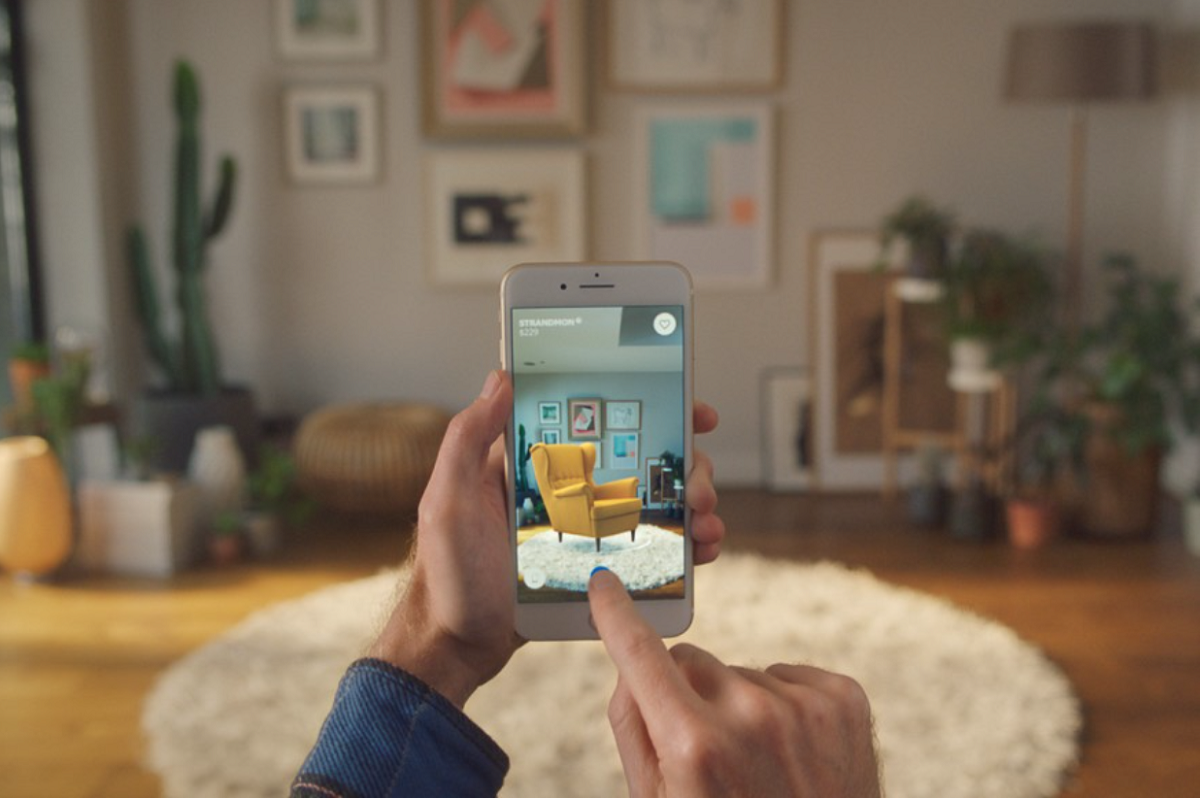Augmented reality is transforming businesses across many industries. Specifically, the enterprise sector is experiencing all sorts of reverberations from the introduction of AR technology. Companies are leveraging augmented reality to streamline their workflow, cut down on logistics and operational costs, and improve the efficiency of many departments, such as marketing, sales, customer service and manufacturing to name just a few.
This post provides an overview of seven cases where augmented reality is used in the enterprise sector and explains how businesses can benefit from AR solutions.
SEE ALSO: Our expertise in augmented reality app development.
What is enterprise augmented reality?
According to research by ARtillery Intelligence, the global market for enterprise AR applications is projected to be worth more than $14.2 billion by 2022. The augmented reality enterprise market includes large, small and medium-sized enterprises operating in a wide variety of sectors including manufacturing, retail, health care, automotive, aerospace, and defense.
But what is enterprise augmented reality and how does it differ from consumer AR? To understand the difference, let’s start with what augmented reality offers users.
- Augmented reality is an interactive experience that integrates digital objects into a real-world user environment. The user can view the content using a mobile device with a camera (smartphone/tablet), web camera or specially designed augmented reality glasses.
- Enterprise augmented reality, on the other hand, refers specifically to productivity software solutions that merge the physical industrial settings with a digital overlay. The workspace setting is the key differentiator between enterprise AR and consumer AR. These solutions serve to improve and enhance different aspects of the organization – maintenance, repair, manufacturing, field service, customer support or training, for example – by leveraging augmented reality.
Augmented reality enterprise use cases and benefits
Among practical, enterprise-focused use cases of augmented reality, there are solutions for remote assistance, product or process visualization, enterprise advertising, and AR developer platforms enabling “see-what-I-see” AR apps for web, mobile, and headsets. Let’s explore the real-world use cases and advantages for business.
1. Remote assistance with AR
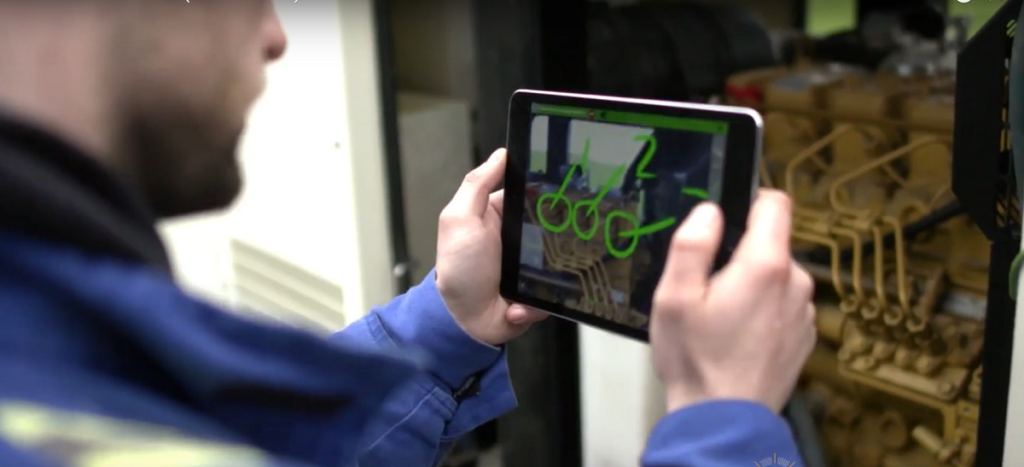
AR remote assistance software enables workers to collaborate efficiently. It creates an interactive environment where digital information is superimposed on real-time video streaming of the physical world to diagnose the problem, provide remote guidance on issues that need to be solved or tasks that need to be accomplished.
The superimposed information sticks to real-world objects and remains in place regardless of camera movement. The user doesn’t need to store this information in memory and can effortlessly overlay drawings on objects with the camera.
Enterprise benefits of AR assistance solutions:
- fast and easier troubleshooting
- reduced downtime
- the time and cost-saving on travel expense
- efficient client’s onboarding
- improved customer support
AR remote assistance apps enable the user to perceive information faster and way more efficiently than through auditory communication. The user or employee can resolve issues remotely with a smartphone or a head-mounted device, seeing step-by-step instructions and getting interactive on-the-spot guidance from anywhere. Here are some examples:
- Vodafone Group uses a remote AR assistance platform to improve customer support and troubleshoot technical and connectivity issues. The solution delivered a 12% increase in first-contact resolution (FCR) and a 68% increase in customer satisfaction.
- Samsung has partnered with JoinPad, introducing the Smart Assistance solution for Samsung Tab Active 2 tablets enabling innovative AR tools for field maintenance.
2. AR for knowledge transfer
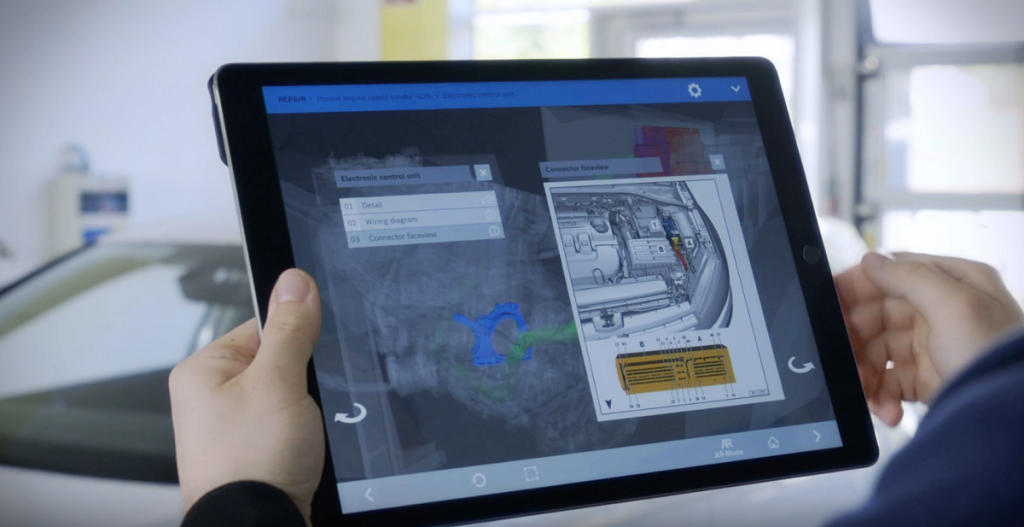
An integral advantage of augmented reality solutions is the camera transferring the real world with “see-what-I-see” technology at the cornerstone. This offers a wealth of opportunity for the enterprise sector to capture, maintain and share knowledge among remote workers or teams.
Enterprise benefits of AR knowledge transfer apps:
- quick employee onboarding and training
- ongoing education at a large scale
- zero travel expense
- reduced risk of mistakes or accidents
- better employee safety
- accommodates the experience of employees and prevents knowledge loss in case of their retirement or leaving the company
- appeals to millennials
Augmented reality apps for knowledge transfer provide 3D experiences, helping to accelerate on-the-job training for existing employees and new hires. Along with smart glasses, the technology immerses employees into simulations and training scenarios in a safe, interactive environment.
3. Logistic apps empowered with AR
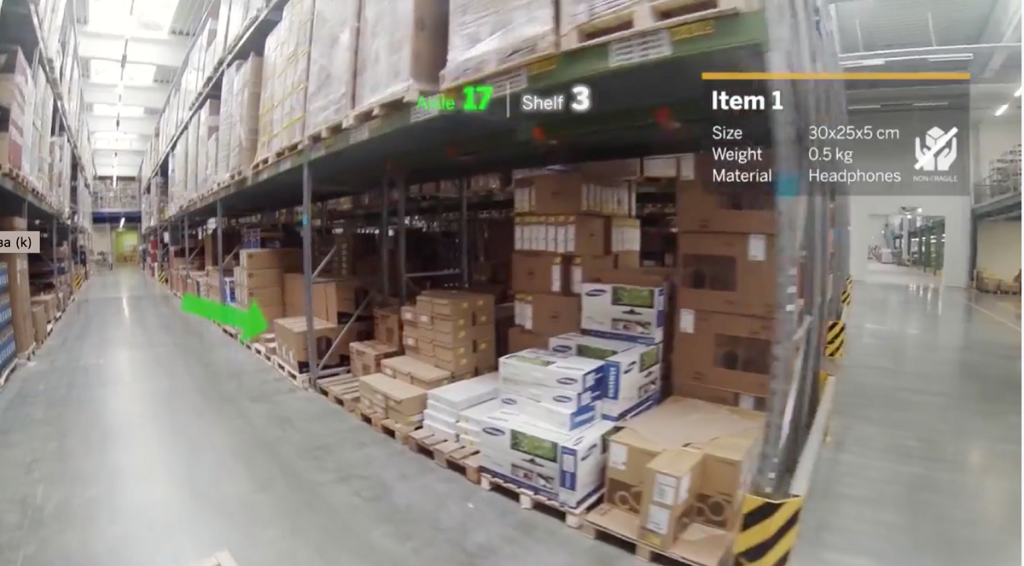
Augmented reality can empower logistics with faster access to anticipatory information anytime and anywhere, improving delivery and load operations. AR logistics apps and services can guide the worker to quickly locate the right item on the shelf. The worker can scan the goods and register the process simultaneously.
Enterprise benefits of AR logistics apps:
- improve inventory management and logistical efficiency and safety
- reduce the logistics time with digital navigation to the right route and items
- decrease the number of picking and dropping errors with 99.99% accuracy
AR technology is applied to visualize packing instructions. As an example, Skoda leverages AR in its video mapping system to assist staff with material picking that provides information and highlights any process errors.
4. Augmented reality product visualization
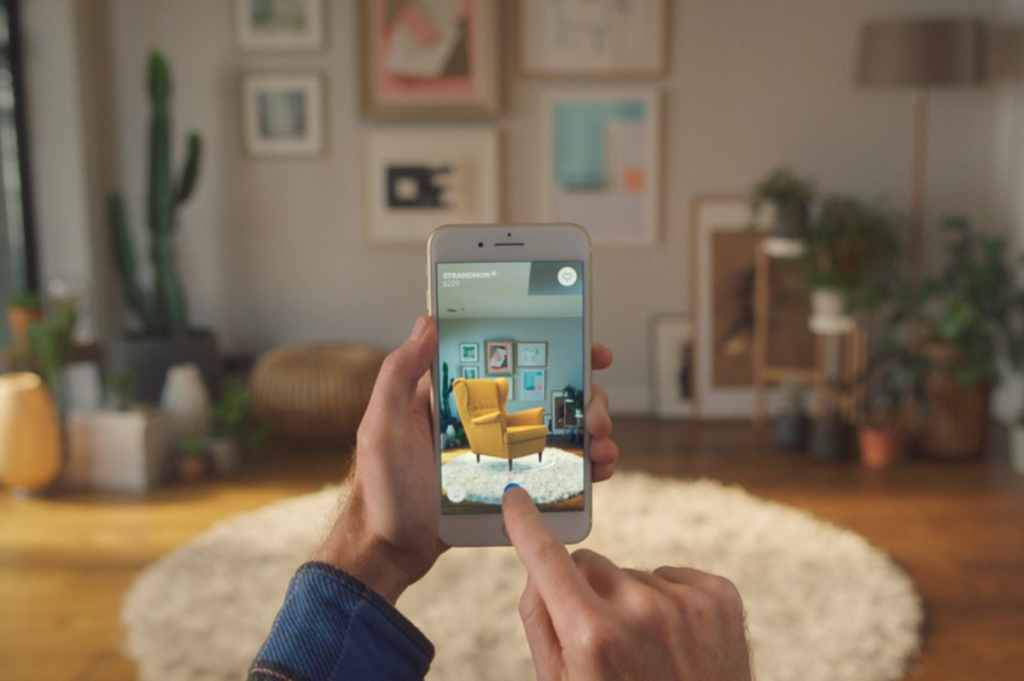
Augmented reality allows products to be visualized with informative graphical overlays and demonstrations. Consumers can virtually try on products using the web camera, mobile device or in-store mirror for makeup, glasses, accessories, jewelry, headwear and hair color.
It makes the buyer’s experience much more captivating, enabling “one-to-one” interaction with sellers through the camera.
Enterprise benefits of AR product visualization apps:
- novelty and convenience of shopping
- reduce returns allowing consumers to try on things virtually
- reach younger audiences with immersive AR experiences
- increase customer engagement and sales with real-time product visualization
- harnesses virality as the clients can take photos and share on social networks.
Two top examples are the L’Oreal and Warby Parker try-on apps. You can also place products into your surroundings to see how they fit, as the IKEA Place app allows.
5. AR for architectural visualization
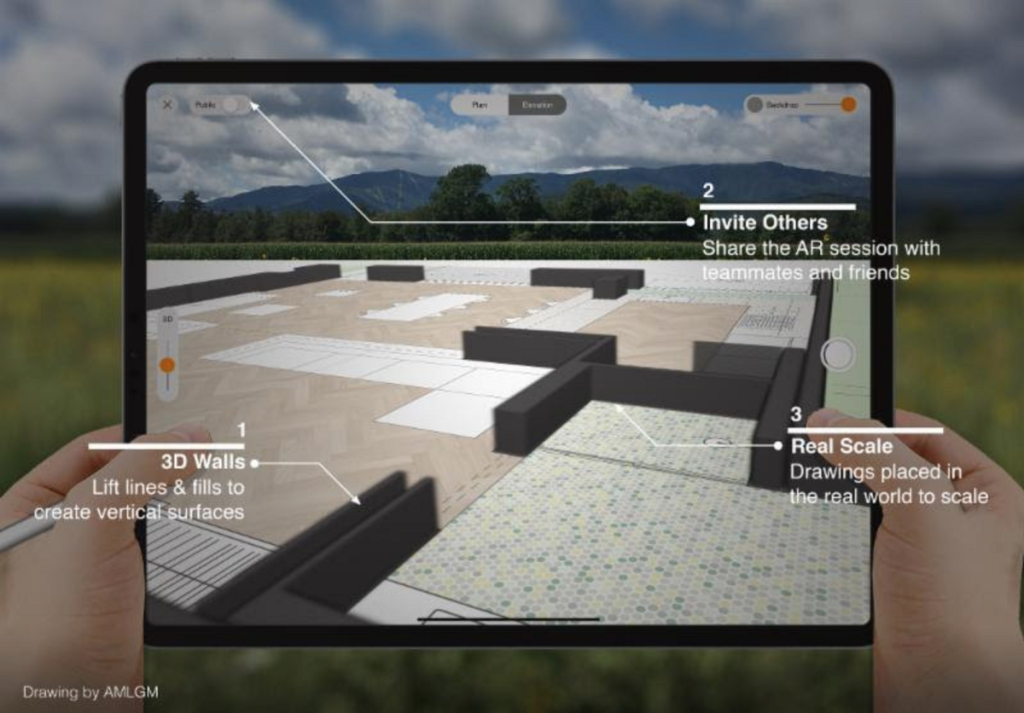
Augmented reality visualization capabilities are second to none, not only for small items you can try on with the camera but for complex architectural models. It enables a more detailed and consistent view of overlaying materials, components, and fittings in an interactive manner that is difficult to visualize through drawings.
Enterprise benefits of AR architectural solutions:
- facilitate the development of complex architectural projects
- cut down on planning and prototyping costs
- improve sales and customer satisfaction
- correlate real structures with the plan to facilitate the construction process and monitor its correctness
AR apps for construction and engineering make a project presentation a much more interactive and uncomplicated experience. Such apps can be scaled to teams allowing different members to collaborate and sync with the current design sharing comments, visual markers, and 3D objects. AR has applications in maintenance, helping workers quickly see how the engineering systems of the building are arranged. At a smaller scale, AR dimensional measurement technologies like AirMeasure and MeasureKit allow you to calculate a distance or gauge an object with a series of handy virtual tools.
6. Augmented reality damage recognition
In the automotive sector, augmented reality enhances car inspection and damage recognition. The AR apps can scan a vehicle detecting damaged parts, estimate the scope of any damage, and transfer this information to the insurance or rental company to share with the customer.
In real-world use cases, augmented reality for damage recognition is still a new area, with insurance and automotive companies now investigating the capabilities of the technology. However, the potential is promising and use cases will come to the market shortly.
7. AR manual and user guide
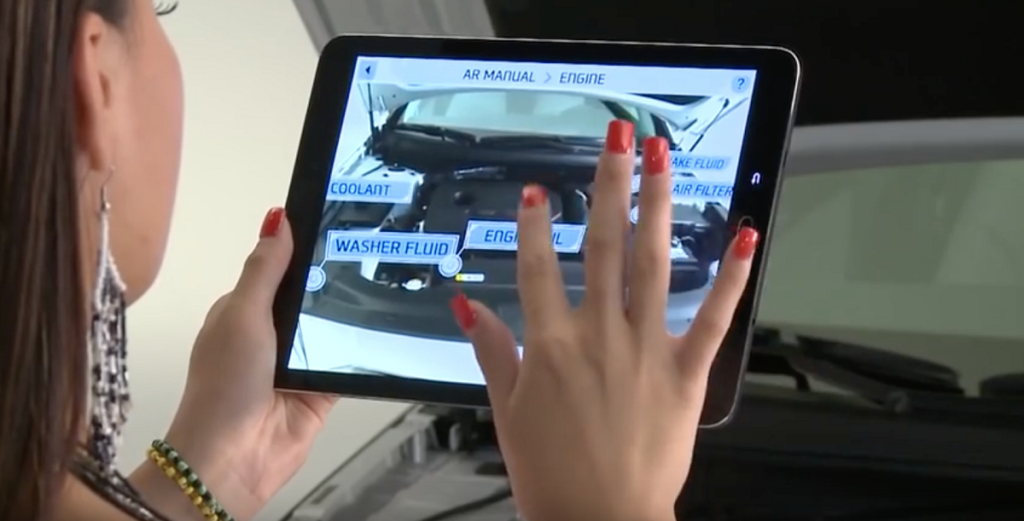
AR manual apps provide interactive on-the-spot guidance and training materials to help consumers perform self-maintenance processes. The core technology behind these apps is 3D object recognition which overlays digital instructions on the needed part of the item.
Enterprise benefits of AR user manuals:
- easy-to-follow visual steps for self-maintenance without the need for much reading of printed materials
- 24/7 availability on a broad range of devices; from iOS and Android smartphones or tablets, to Microsoft’s HoloLens, or AR glasses
- faster maintenance training and user onboarding
- decreased maintenance time and efforts for the enterprise support department
The enterprise sector has already started to explore the efficiency of AR manuals for consumers and workers. For example, the automotive giant Hyundai has implemented a mobile AR manual that shows you how to fix your car. Genesis and Mercedes have released AR manuals with integrated features that recognize car parts and provide instructions on management and usage.
Helmes builds custom software that meets the needs of your organization. See our expertise in AR app development or contact us for a consultation.
